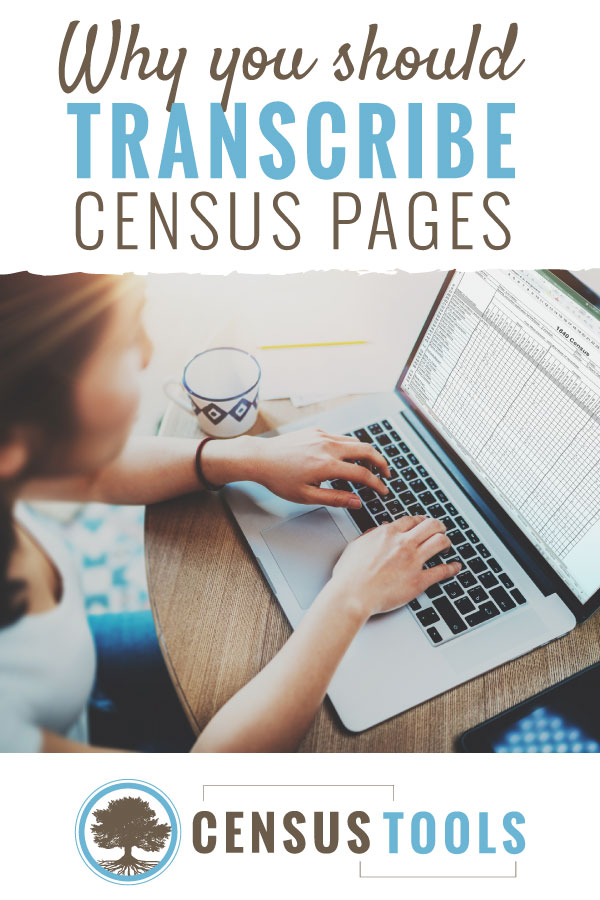The first genealogical research I ever did was census look-ups at the National Archives in Washington, D.C., over 25 years ago. We lived about an hour away, and I would drive up for the day and spend hours using Soundex indexing system to find the correct microfilm, then transcribe the census records onto large printed forms. It was so exciting to see the images of the census sheets on the microfilm reader!

With the introduction of Ancestry’s online access to records that can be automatically appended to trees online or in Family Tree Maker, it is easy to let expediency win out over best practices. Census research online can be as simple as clicking to add facts to a tree, but we cheat ourselves out of important evidence when we skip transcription.
Reasons to transcribe census records
Transcribing census records in spreadsheets is the best way to:
- avoid errors recorded by indexers
- prevent overlooking relevant information
- familiarize yourself with your ancestor’s FAN
- track your ancestor over time
- prevent assumptions of information not stated
- reconstruct neighborhoods by combining census data with city directories
With CensusTools spreadsheets, it is easy to track an ancestor over time by transcribing the information for each census year into a single workbook. Including everyone enumerated on the same census sheet as well as the sheets before and after your ancestor will often reveal people who migrated or immigrated together.
If you are lucky enough that a city directory was compiled within a year or two of the census date, you may find that you can plot out your ancestor’s neighborhood and give context to its makeup. It was in this way that I discovered that my 4x great grandfather lived just a few doors down from “voodoo queen” Marie Laveau in New Orleans in 1840.
Common census mistakes
Common mistakes when working with censuses can make your research more difficult. Resist these temptations as you work:
- only transcribing information for the ancestor’s family and not other individuals listed before and after
- skipping information that seems irrelevant or unimportant when transcribing
- assuming facts not stated (particularly kinship, where transcriptions can help highlight where relationships are not stated)
- assuming that the enumerator followed instructions or that the informant gave accurate answers (the most common instance being dates that are recorded as of the date on the sheet instead of the official enumeration date)
- not taking into account how accents and pronunciation affect the information that was recorded, particularly for immigrants
Enumerator instructions can help you to shed more light on elusive ancestors; visit our Census Enumerator Instructions page with links to instructions and other relevant resources for more information. Knowing what was meant by inmate, what the official enumeration date was for the census, or what the requirements were for the race listed are just a few of the details you will find in the instructions.
When you transcribe census records for your ancestor, you become more intimately acquainted with the information about him or her. That knowledge can help you spot important details not just in the census, but also in other records, which can move you closer to the goal of telling your ancestor’s story. Want to give it a try? Download the 1940 census spreadsheet for free.
Leave a Reply